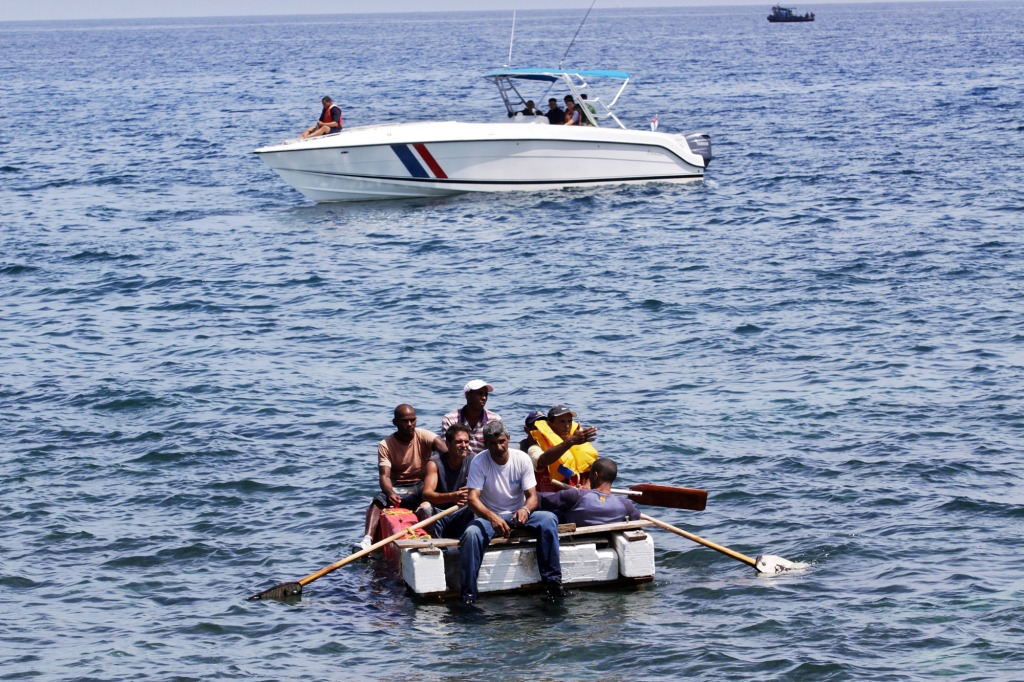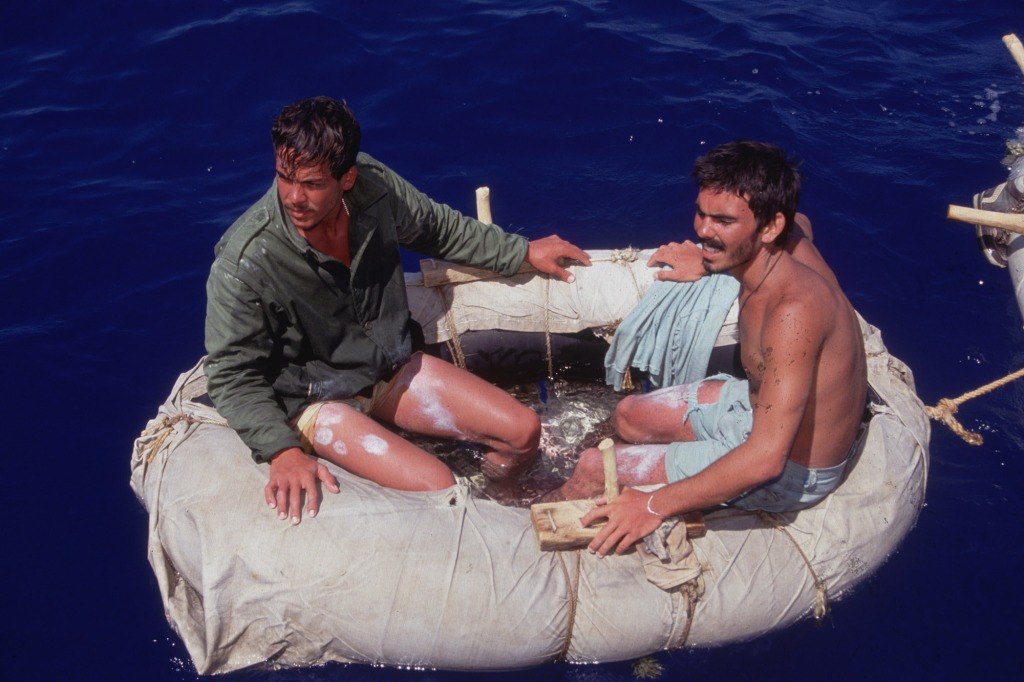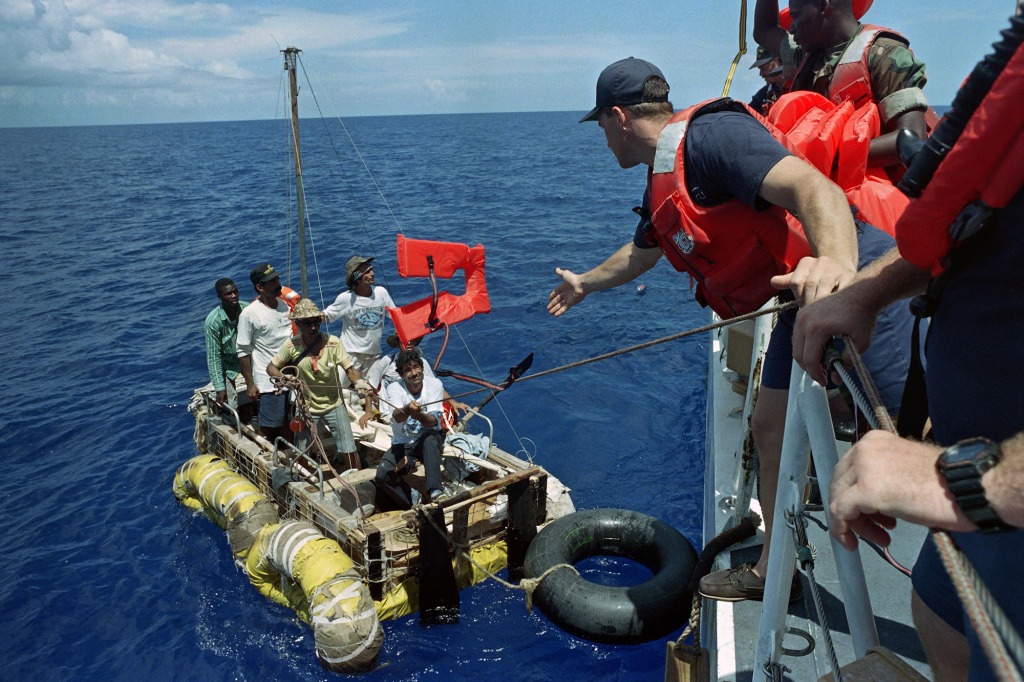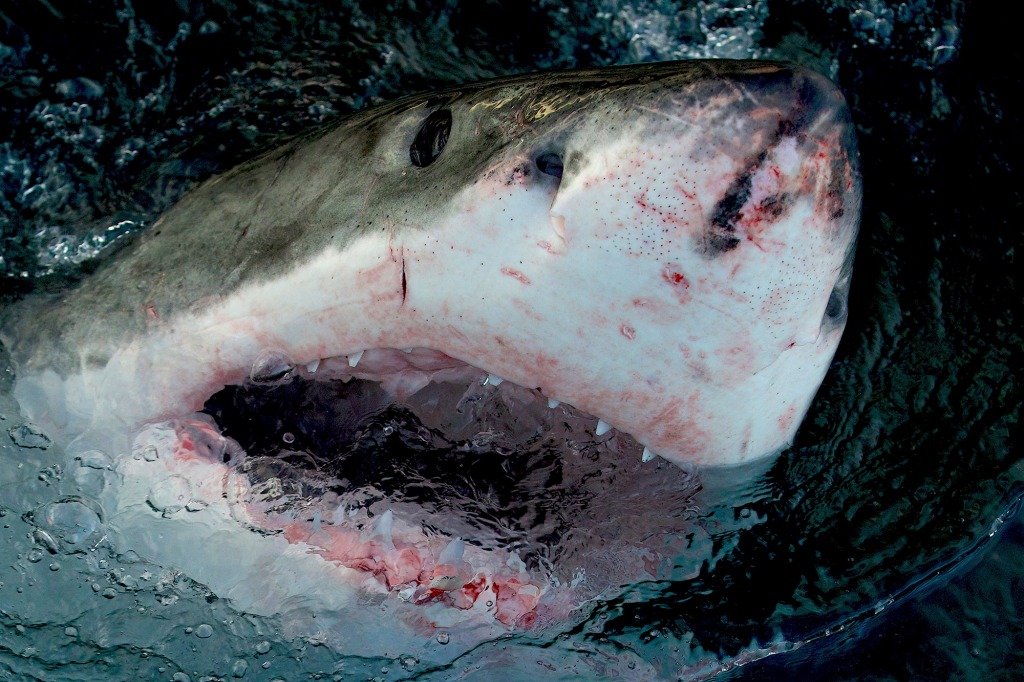Cubans in 90s flotilla were regularly attacked by sharks
The titillation and thrill of the Discovery Channel’s “Shark Week” is totally lost on Cuban exile Elicier Castillo, a former heavyweight boxing champ.
“I get goose bumps whenever I see anything with sharks and turn it right off,” he once told The New York Times.
The Cuban boxer and four partners, including his two brothers, lashed together an inner tube and canvas raft in 1994, hopped aboard and paddled north into the Gulf Stream as part of a small fleet of similar floating contraptions filled with similarly desperate Cubans trying to flee Fidel Castro’s communist regime.
As usual, within hours sharks were trailing and circling the rafts. The current carried the ramshackle rafter flotilla away from the U.S. and Castillo spent five days at sea.
He recalls watching many of the rafts around him capsizing and falling apart from the waves. The sharks would rush in immediately, their patience and diligence paying off. Castillo would see the water frothing white, then red as his fellow rafters yelled for help.
“But what could anyone do?” he recalled.
“Getting attacked by a shark just might be the scariest event in nature!” gasped a Discovery Channel narrator during Shark Week a few years ago. “Australia recorded 56 fatal shark attacks between 1956 and 2008!” he gasped again. “Find out what it’s like from people who’ve lived to tell the tale!”
So the Discovery Channel went back over half a century and to a distant continent to interview the victims and dramatize the attacks. But why the distant timeline and setting? Just ask many south Floridians.
“The Florida Straits probably record 56 fatal shark attacks every few years,” says Matt Lawrence, who spent years flying over the straits rescuing desperate Cuban rafters.
Probably every month during the early 90’s,” adds the late Bay of Pigs vet Arturo Cobo, who ran the rafter rescue center in Key West and for years heard the sobbing, gut-gripping details of these attacks almost daily.
“I’ll never forget the case of the two teenagers who came ashore, sunburnt, malnourished as usual, but also in a state of near hysteria,” recalled Cobo. “After a while they could finally explain how their father, in a delirious state from thirst and exposure, finally jumped in the water.


“They threw him a rope tied to the raft and he clutched it. So they turned away for a second, slightly relieved — but only to spot a huge shark approaching, then another. Soon an entire school was around their raft.
“And almost before they could react, the sharks ripped into their father from all sides. From what they told me days later at the local hospital what erupted around their tiny raft was a feeding frenzy, like the ones you see on those shark shows where they bait the water for hours to attract the sharks. The water turned red as their father was eaten alive. …
“I can tell you from decades of and heart-breaking work from our center here in Key West that in the Florida straits, every week was shark week.”


One of Lawrence’s colleagues recalled a harrowing rescue:
“Something was moving in this raft,” recalled the airborne rescuer. “So I went in lower. The water all around the raft was turning red. … the cloud spreading. Then I saw the shark — about the same length as the raft. The rafter was in fact a Cuban woman in her early twenties.
“Upon her rescue we found she had two bullet wounds in her legs from Castro’s frontier police. All others in the raft, including two infants, had died, as did the shark — from being repeatedly stabbed by the pointed end of a broken oar by Maria. The Shark had bitten the oar in half as Maria pounded him.

“I started flying rescue missions full-time after that.”
The waters surrounding Cuba are famed for their hordes of sharks. Yet from a quarter to a half million Cubans seeking American freedom have crossed these waters with little between them and the sharks than thin rubber or canvas, knowing the odds were close to 50-50 that their craft would overturn or crumble.
In 2015 the Discovery Channel finally visited Cuba. Yet during this entire blockbuster episode of “Searching for Monstrous Sharks Near Cuba” — produced in conjunction with totalitarian Cuba’s propaganda ministry in a place that has probably seen more fatal attacks than anywhere else — the producers did not mention a single shark molesting a single human being.

Humberto Fontova is the author of “Exposing the Real Che Guevara and the Useful Idiots Who Idolize Him.”
Read the full article Here


